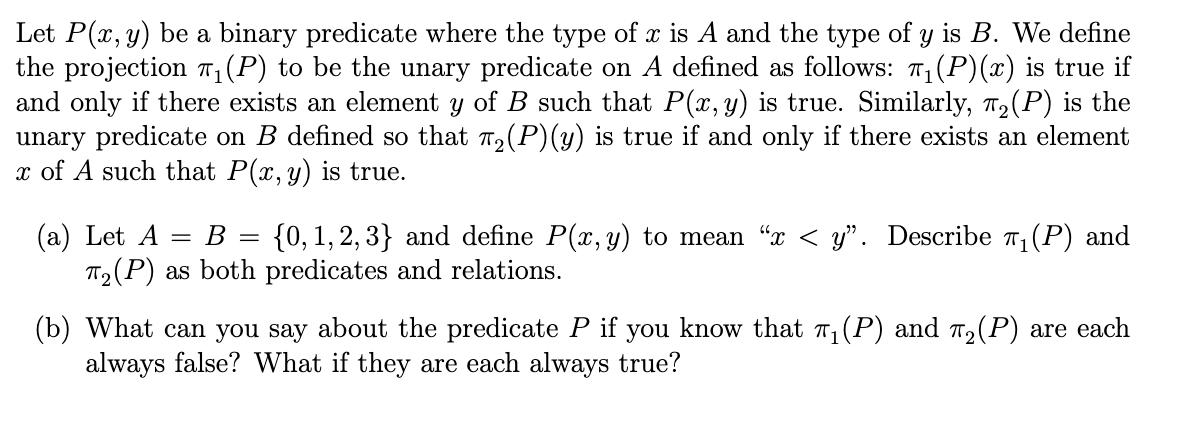Answered step by step
Verified Expert Solution
Question
1 Approved Answer
Let P(x, y) be a binary predicate where the type of x is A and the type of y is B. We define the

Let P(x, y) be a binary predicate where the type of x is A and the type of y is B. We define the projection (P) to be the unary predicate on A defined as follows: T (P)(x) is true if and only if there exists an element y of B such that P(x, y) is true. Similarly, 72(P) is the unary predicate on B defined so that 72(P)(y) is true if and only if there exists an element x of A such that P(x, y) is true. B = (a) Let A {0, 1, 2, 3} and define P(x, y) to mean x < y. Describe T (P) and T2(P) as both predicates and relations. (b) What can you say about the predicate P if you know that (P) and 2 (P) are each always false? What if they are each always true?
Step by Step Solution
★★★★★
3.34 Rating (157 Votes )
There are 3 Steps involved in it
Step: 1
The question asks What can you say about the predicate P if you know that P and P are each always false What if they are each always true Understanding the notation Px y is a binary predicate which me...
Get Instant Access to Expert-Tailored Solutions
See step-by-step solutions with expert insights and AI powered tools for academic success
Step: 2

Step: 3

Ace Your Homework with AI
Get the answers you need in no time with our AI-driven, step-by-step assistance
Get Started


